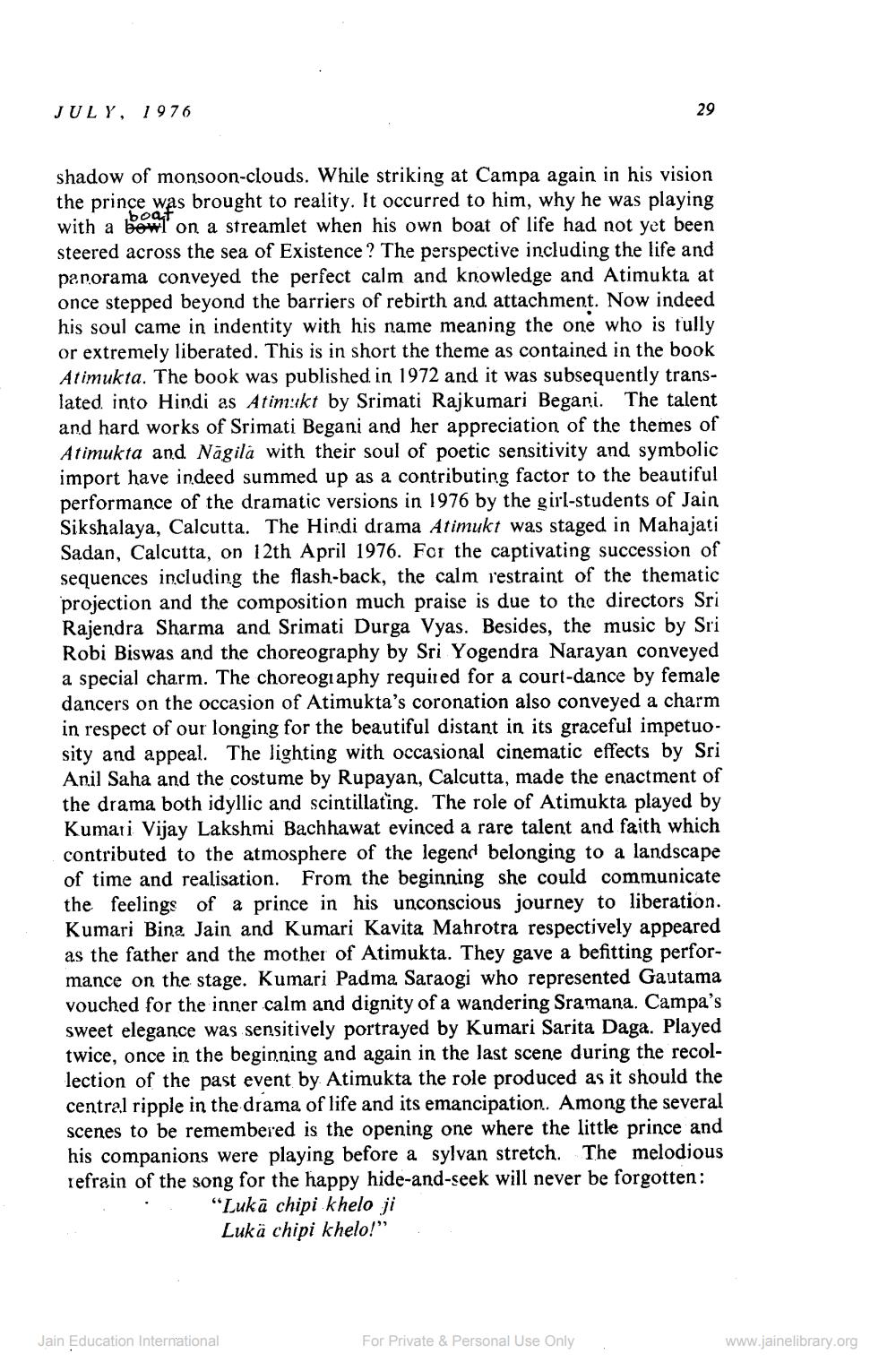________________
JULY, 1976
shadow of monsoon-clouds. While striking at Campa again in his vision the prince was brought to reality. It occurred to him, why he was playing with a bowl on a streamlet when his own boat of life had not yet been steered across the sea of Existence? The perspective including the life and panorama conveyed the perfect calm and knowledge and Atimukta at once stepped beyond the barriers of rebirth and attachment. Now indeed his soul came in indentity with his name meaning the one who is fully or extremely liberated. This is in short the theme as contained in the book Atimukta. The book was published in 1972 and it was subsequently translated into Hindi as Atin:kt by Srimati Rajkumari Begari. The talent and hard works of Srimati Begani and her appreciation of the themes of Atimukta and Nagila with their soul of poetic sensitivity and symbolic import have indeed summed up as a contributing factor to the beautiful performance of the dramatic versions in 1976 by the girl-students of Jain Sikshalaya, Calcutta. The Hindi drama Atimukt was staged in Mahajati Sadan, Calcutta, on 12th April 1976. For the captivating succession of sequences including the flash-back, the calm l'estraint of the thematic projection and the composition much praise is due to the directors Sri Rajendra Sharma and Srimati Durga Vyas. Besides, the music by Sri Robi Biswas and the choreography by Sri Yogendra Narayan conveyed a special charm. The choreography required for a court-dance by female dancers on the occasion of Atimukta's coronation also conveyed a charm in respect of our longing for the beautiful distant in its graceful impetuosity and appeal. The lighting with occasional cinematic effects by Sri Anil Saha and the costume by Rupayan, Calcutta, made the enactment of the drama both idyllic and scintillating. The role of Atimukta played by Kumari Vijay Lakshmi Bachhawat evinced a rare talent and faith which contributed to the atmosphere of the legend belonging to a landscape of time and realisation. From the beginning she could communicate the feelings of a prince in his unconscious journey to liberation. Kumari Bina Jain and Kumari Kavita Mahrotra respectively appeared as the father and the mother of Atimukta. They gave a befitting performance on the stage. Kumari Padma Saraogi who represented Gautama vouched for the inner calm and dignity of a wandering Sramana. Campa's sweet elegance was sensitively portrayed by Kumari Sarita Daga. Played twice, once in the beginning and again in the last scene during the recollection of the past event by Atimukta the role produced as it should the central ripple in the drama of life and its emancipation. Among the several scenes to be remembered is the opening one where the little prince and his companions were playing before a sylvan stretch. The melodious refrain of the song for the happy hide-and-seek will never be forgotten:
“Lukā chipi khelo ji Lukä сhipi khelo!”
Jain Education International
For Private & Personal Use Only
www.jainelibrary.org




